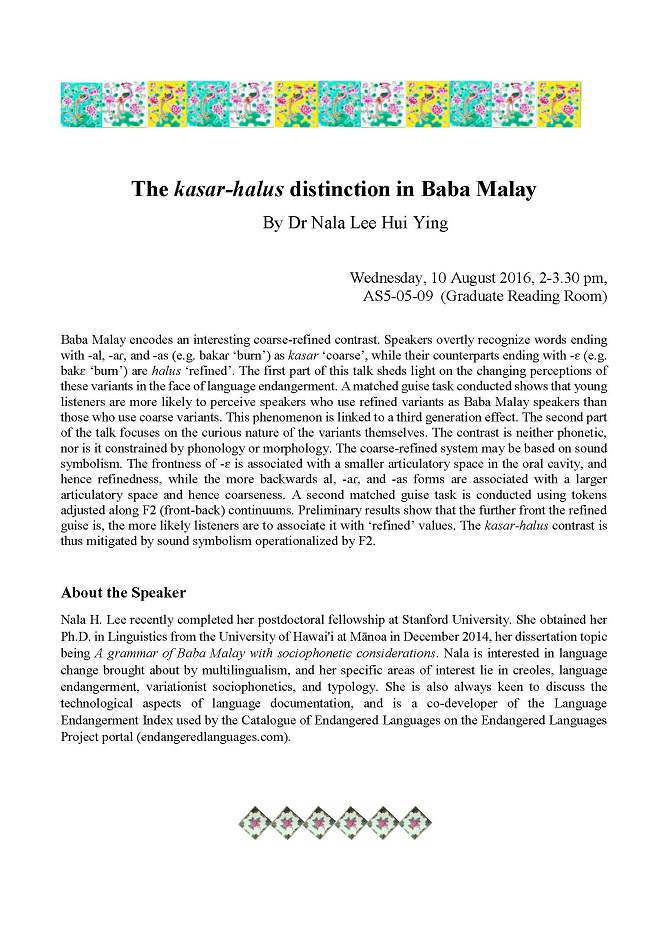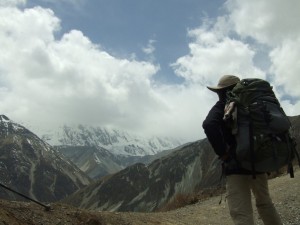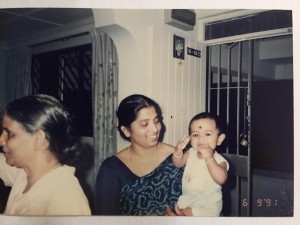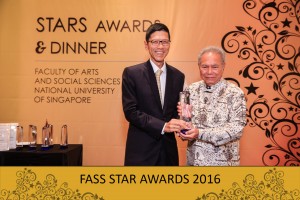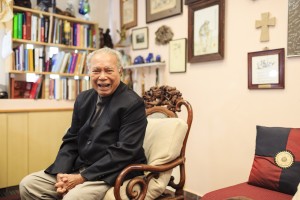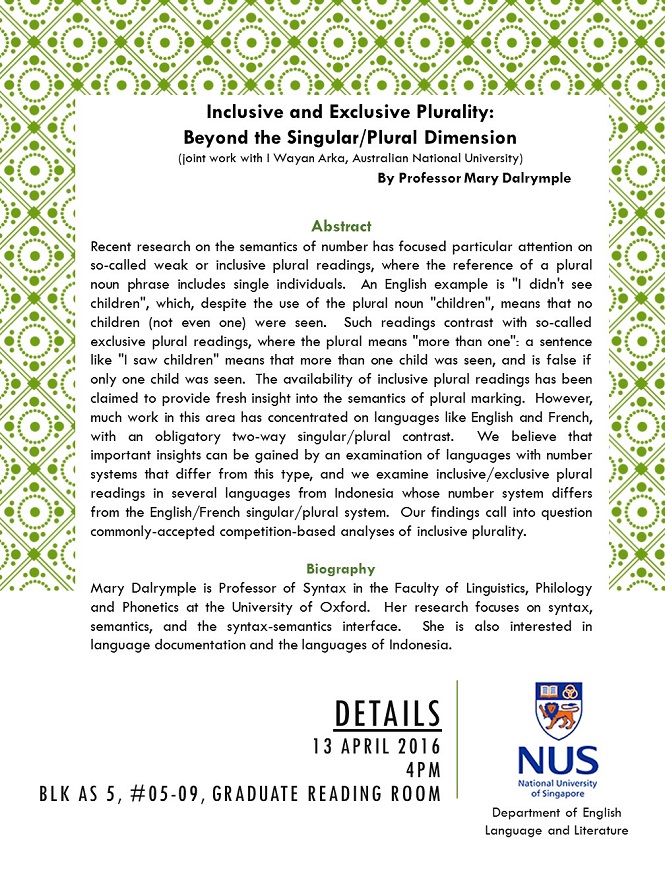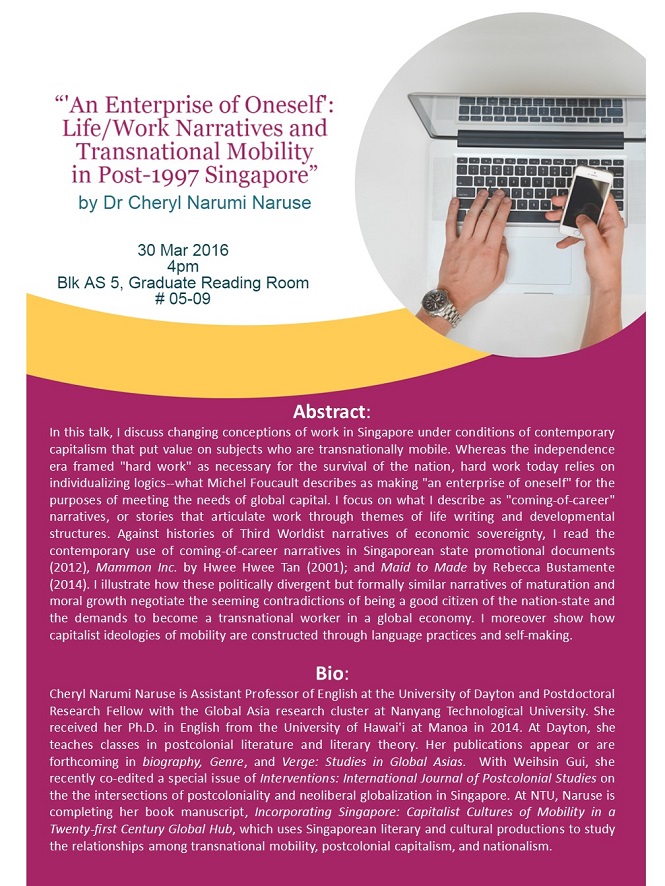Graduate Student Walter Chan Presents at the Bridging Gaps Conference
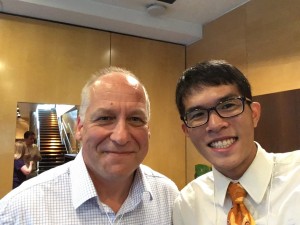
In July 2016, a Masters student from the department, Walter Chan Mun Keet, attended the Bridging Gaps conference in Barcelona, organised by the Centre for Media and Celebrity Studies. The conference, subtitled “What are the media, publicists, and celebrities selling?”, aims to discover solutions by investigating the link between celebrity status and activism. Here, taking on both roles of interviewer and interviewee, Walter interviews himself about his presentation and research interest areas.
What is your presentation about?
It’s basically about how we read media, in this case, social media. My focus is on finding alternative methods to read different sociologies of new media, through theory. On the one hand, I think social media has infiltrated our everyday activity to the point where we instinctively engage in the process without giving it much thought. And on the other hand, I think that social media has received flak (and rather unfairly so, in my opinion) for being a text too “shallow” or “banal” for analysis. Isn’t it the other way round? It’s this emergent technology at the forefront of our daily experience, and it keeps on changing at every single moment. In my opinion that qualifies it as an exciting new field of study, and I think we can all be enriched if we give it its due academic credit.

Okay, but if studying social media texts are as rewarding as you claim, how then would you analyse it? Give us one example of your method.
I think the one that really stuck with the people at the conference was the one about Kim Kardashian’s selfies. Yes, Kim Kardashian. The Queen of selfies. Anyway, if you think about why the selfie is such a common image on social media–doesn’t it have to do with the immediacy of the face? I think it performs a metonymic function–you instinctively recognise that there is another human being there, based on the face alone. And also, you can materially localise this sort of “instinct” within the brain–this particular portion in the fusiform gyrus is developed specially for facial perception.
So I try to read the selfie through one notable theory of the human face, by the French philosopher Emmanuel Levinas. For him, the face-to-face encounter is, at its very core, ethical. And this sort of ethics, for Levinas at least, precedes ontology–that means it is already in play even before our mental conception of such an encounter. In other words, we are beckoned (i.e. we have no choice in this matter) into a contractual responsibility for the other. And I try to place this ethical demand into the context of the selfie, to rationalise why people have such strong emotional reactions (from awe to joy to hate) to selfies in general.
I see. So you’re very theory-driven, then?
Oh, definitely. I think one of the reasons why I love doing critical theory is because it’s not just a topic, but also a method. It’s crazy how many ways you can make sense of things.
Indeed. And besides Levinas, there’s another line of argument that theorises the female selfie as re-appropriating the male gaze.
Absolutely! There are also potential threads from film and aesthetic theory that one can choose to tug at, for alternative perspectives on theorising the selfie. I think it’s great. People are starting to take notice of the value of earlier critical thoughts in the domain of new media, and this illuminates different ways of thinking media and thinking through media. This is one #throwback that refreshes the old anew–both past and present can learn much from each other, through the exercise of critical theory.
Whoa whoa, was that a hashtag in your reply?
Yes. Am I cool now?
No. Do you have a favourite theorist? Or theory?
Hmm . . . . I don’t think I’d want to pick favourites, I think all of them are exciting in their own sort of way. For this conference presentation I tackle Levinas, Badiou and Derrida. And for my Honours thesis earlier this year, under A/P John Phillips, I did some Derrida and Jameson on the topic of the female superhero. And on and off I’ve worked on many others: Lacan, Deleuze, Barthes, Spivak, Bhabha, Bakhtin, Mulvey, Foucault, Butler, Irigaray, Althusser, Durkheim, Benjamin, McLuhan. All of them fascinate in their own way.
Hold up a second. Kim Kardashian, superheroes – you sure do pick some wacky examples for theoretical analysis.
Oh yes. Yes. Haha! I’m all about pop culture. I love watching films, I love graphic culture, I love listening to popular music, I love reading satirical social commentary. I guess that’s where my research interest lies–right smack at the intersection between pop culture and critical theory.
Goh Sin Tub Creative Writing Competition Winner: Isaac Lim
The prize ceremony for this year’s Goh Sin Tub Creative Writing Competition was held on 1 June. Dr Sylvia Goh was the guest-of-honour for the event, and she presented prizes to the winners. In the first of a two-part series, we speak to some of the winners of the Competition. Here we talk to Isaac Lim who won Second Prize for his play Whither Are We Going.

Q: Could you tell us what your play is about and what inspired its writing?
Whither Are We Going, put simply, is about identity. As much as I hate to say this, it involves globalization, and the millenials’ concept of language and their questioning of national identity and meritocracy. Sneaked within are two ambiguous relationships that never quite work out, and some sort of political commentary on Singapore and our neighbors.
Through this work, I hope to raise the issues of who we are as Singaporeans, our identity, and if we as a nation are perhaps too competitive (which is not for our own good). It questions Singaporean millenials’ position in the diverse world we live in today.
Q: You are currently also part of the undergraduate program in theatre in NUS. Does your academic studies in theatre have any influence on your creative writing?
I’ve actually just completed my BA (Hons) in Theatre Studies here at the Faculty of Arts and Social Sciences in NUS, and the four years have taught me so much about theatre and performance. I am glad that I’ve been provoked to think of issues in very different ways, and am allowed to see things from various perspectives and angles.
There are two modules which I consider to have a big impact on my writing today–firstly “Introduction to Playwriting” and thereafter “Advanced Playwriting,” both of which are taught by Ms Faith Ng. The two modules exposed me to various play genres, and challenged me to attempt writing works that I would never have tried before. It is in these two modules that I learned playwriting skills. I also met a great group of classmates who are unselfish in sharing ideas and opinions as we do peer reading and reviews in each class session.
Another module that influenced me is “Singapore English Language Theatre,” taught by Dr Robin Loon. The module offers a comprehensive survey of the vast collection of original works churned out by Singaporean or Singapore-based playwrights over the years. The intensive course tasked us to read and understand the history of local theatre development, and opened my eyes to the fantastic world of Singapore literature. It aspired me to want to be part of the scene in the near future and to add to its library of creative texts.
Q: Could you share some of your thoughts on the theatre scene in Singapore today? What are some of your hopes for Singapore theatre?
I believe that the theatre scene is burgeoning even more today than a decade ago. More people are willing to be audiences to support original local works. The next three months alone, we get to see at least five local theatre-related festivals, from Peer Pleasure, a festival for school drama groups, to the Twenty-Something Theatre Festival which serves as a platform for young emerging writers. We also have the Singapore International Festival of Arts, which attracts a vast regional and international audience.
I myself watch a rather broad range of theatre shows, from headline productions to fresh, independent works. I am especially intrigued by the works of Chong Tze Chien, especially writings like Pan Island Expressway (1998) and Charged (2010). I am also inclined to favoring works by Natalie Hennedige whom I have had the pleasure of working with; Hennedige directed me in my Play Production module. Hennedige’s works are bold and provocative, and focus much on the craft of storytelling among other things.
The past year has been a good one for me as I “venture” into the professional theatre scene in Singapore. Post-graduation, I am open to working freelance as a theatre practitioner, and believe there are many more things to be learned. There is space for growth in the Singapore theatre scene, as emerging writers, actors and directors are slowly taking to the stage. My hope is that there will be more funding from the authorities to push for a more vibrant arts scene and that theatre can reach out to more audiences because there are many stories waiting to be told. Theatre always provides food for thought, and is always targeted at the masses. If Singaporeans do not support Singapore theatre, who will?
Q: What are your future plans? Are there further plays or productions in the pipeline?
I am currently looking for work opportunities, including teaching theatre and drama to young children. As mentioned earlier, I am also very ready to be a freelance theatre practitioner in Singapore. If there are opportunities for further studies in the near future, I would like to do research and learn about directing and dramaturgy.
This prize has been a great encouragement to me. I hope to further develop this piece–Whither Are We Going?–through the National Arts Council-Mentor Access Project. My aim is to complete the work into a full-length piece, and perhaps have it staged within the next 2 years.
With the prize money, I also seek to start a collaboration with my peers to put up the work on stage. Currently, Between Consciousness, an earlier play of mine, is being worked on and I am seeking people who have interest to come together to develop the writing into a stage production.
Alumnus Prasatt Arumugam Treks the Pacific Crest Trail in Support of the Children’s Cancer Foundation
Come July, Prasatt Arumugam, a former English Literature major who graduated in January 2016, will be embarking on an immense expedition that will be a first for Singapore. He will trek the entirety of the Pacific Crest Trail (PCT), which stretches 4,280km from Canada to Mexico, in a bid to be the first Singaporean to thru-hike the PCT. This arduous journey which takes more than 5 months to complete is a true test of the mind and body. It demands walking for 10 hours a day, with a backpack that can weigh up to 20kg, through a distance equivalent to walking from Singapore to China. He will also have to battle challenging terrain such as icy mountain passes and parched deserts. It is no wonder that more people have reached the summit of Mt Everest than completed the trail.
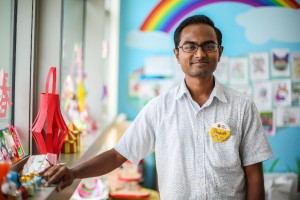
But for Prasatt, this endeavor is fueled by a cause larger than himself. This campaign is dedicated to the brave children whom he volunteers with at the Children’s Cancer Foundation (CCF). His journey with CCF began after his aunt passed away from cancer. She was like a mother to him and her loss was a particularly hard blow for him. This eventually prompted Prasatt to want to reach out to others suffering from cancer like his aunt did. Combined with his love for children, CCF became the logical choice.
Prasatt currently volunteers as a play personnel at the CCF Playroom in the National University Hospital. He engages in distraction play therapy, to help take the minds of the children off the pain and discomfort of treatments and check-ups. This allows them not to associate the hospital as merely a place of sadness and pain, but also as a place where they can meet friends and do things they love. In his time there, he has met many young ones afflicted with cancer. Despite their youth, they face their immense battle with cancer with such courage and grace that Prasatt feels they deserve every possible chance of success in their fight. This is why he has decided to embark on TrekInvicta – a social initiative in support of CCF.
Through his own arduous journey, he aims to present a tangible parallel to the struggles that these children of CCF face on their long road to recovery. In doing so, he hopes to draw greater awareness to their cause and raise $26,660 – $10 for every mile – for CCF to continue its good work. 100% of all gross proceeds will go to CCF and donations above $50 are eligible for a 2.5x tax deduction. The funds raised are put to good use. According to CCF’s 2014 Annual Report, about 92% of CCF’s funds are channeled directly to aid its beneficiaries in the form of programs such as financial assistance, casework and counselling, and CCF’s learning centre, Place for Academic Learning and Support (PALS).
Prasatt hopes that readers of this blogpost can lend their support to these children to let them know that they are not alone in their fight. You can contribute to the campaign by heading to http://tinyurl.com/give2trekinvicta. No amount is too small, and every dollar makes a difference in the lives of these children! To learn more about the campaign, please head to http://trekinvicta.com. Should you require any further information, Prasatt can be contacted at trekinvicta@gmail.com. Let us stand together with one of our own to stand in solidarity with children afflicted with cancer.
Call for Entries: INYT 2016 Asia Pacific Writing Competition
The Department has received an invitation to its students to participate in the International New York Times (INYT) Writing Competition. Winners of the competition will have the opportunity to be published in INYT’s Asia-Pacific Edition and be read by over 200,000 people.
This year’s topic is “Global Youth” and all entries will be judged by INYT’s awarding-winning newsroom. All participants will also get a certificate of participation. Details of the competition are below.
CATEGORY: University
SUBMISSION
–Original
–Individual, or maximum 3 teammates in a group (from the same school)
ARTICLE
–Use a wide range of vocabulary
–Structure should be fluent and consistent
–Should be creative and captivating
–Follow the layout and feel of a typical INYT article.
FORMAT
Font: Times New Roman, Size 10
Page size: A4
Margins: 1 inch on all sides
Columns: space between columns should be 0.5 inches
Length: 1 page only, single-spaced (approximately 900 words)
Document: submit your work as a WORD file, PDF files will not be accepted
File Name: Document should be saved in the following format Surname_First Name_INYT2016
PHOTOGRAPH
No more than 1 photo may be included in the same page. Due to space restrictions, photographs accompanying the winning article will not be published
JUDGING CRITERIAS
–Content (50%): Main ideas and supporting ideas
–Form (30%): Grammar, organization and craftsmanship
–Impression (20%): Prognosis and personal reaction
PRIZE (CHAMPION)
–Article will be published in the Asia Pacific edition of the INYT
–One-year subscription to the INYT Digital
–US$50 gift voucher per group
–INYT trophy
PRIZE (RUNNER-UP)
–Six-month subscription to the INYT
–US$25 gift voucher per group
–INYT trophy
SUBMISSION DEADLINE
29 July 2016, 00:00 HKT
SUBMISSION WEBSITE
https://canvas.instructure.com/enroll/7GWRYR (must create a new account)
Full details, including a sample entry, are here: 2016 INYT Writing Competition.
Emeritus Professor Edwin Thumboo Receives Distinguished Alumnus Award
On 15 April, our Emeritus Professor, Edwin Thumboo, received a Distinguished Alumnus Award from FASS.
The award was recognition of a career and a life, in which Prof Thumboo (affectionately known simply as “Prof”) has been a poet, scholar, academic leader and champion of Singapore writing. A sentence like that is often qualified with the term “variously,” but that would be misleading here. Prof has not variously performed these roles—usually he has performed them all at once.
He became Dean of FASS in 1980, and remained in that position for 11 years. During his tenure, he oversaw a number of important reforms of what the faculty offered. FASS grew, and English Language, Japanese Studies, Psychology, Linguistics, European Studies and Mass Communications all came into being as Majors in his time. Other notable achievements included the founding of the Centre for Advanced Studies and the Centre for the Arts. He also instituted Singapore Writers Week (renamed the Singapore Writers Festival in 1991), the journal Singa: Literature & the Arts (1980-2000) and the annual 5-day Residential Creative Arts Programme.
After giving up the Deanship, he became Director of the Centre for the Arts, where he was able to pursue another of his lifelong passions, the encouragement of the creative arts in Singapore. Many student groups established themselves with his encouragement, including NUS Dance Synergy, NUS Jazz Band, NUS Lion Dance, NUS Dance Blast, NUS Chinese Drama, nu(STUDIOS) Film Production, NUS Singa Nglaras Gamelan Ensemble, Kent Ridge Ensemble and the NUS Arts Festival. He also played an instrumental role in the establishment of the University Cultural Centre. Facts like these can document individual achievements, but perhaps they fail to identify the most substantial achievement. As Director, Prof made the arts a central part of NUS’s life and identity.
A scholar of English literature, Prof is also a well known poet, indeed, in some ways he can be considered the father of Singapore poetry. His main publications are Rib of Earth (1956), Gods Can Die (1977), Ulysses by the Merlion (1979), A Third Map (1993) and Still Travelling (2008). For works such as these he has been recognised with the 1978, 1980 and 1994 National Book Development Council of Singapore awards for poetry in English, the 1979 Southeast Asia Write Award, the 1980 Cultural Medallion, the 1987 ASEAN Cultural and Communication Award in Literature, the 1981 Bintang Bakti Masyarakat (Public Service Star) and the Public Service Star (Bar) in 1991, the 2002 Raja Rao Award and the 2006 Pingat Jasa Gemilang (Meritorious Service Medal).
But Prof was never content simply to write and publish his own poetry. More perhaps than anyone else, he has worked to encourage and promote other Singaporean writers. Even as an undergraduate and a member of the Youth Poetry Circle, he organised readings and later anthologies The Flowering Tree (1970), Seven Poets (1973), The Second Tongue (1979), The Poetry of Singapore (1985) The Fiction of Singapore (1990), &WORDS: Poems Singapore and Beyond (2010).
Prof is still writing and still working for poetry here. Last year, he founded the Singapore National Poetry Festival, a multilingual, multicultural organization that develops and promotes Singaporean poetry holistically. He also initiated the Singapore Chapter of the ASEAN Young Writers Award. He has a number of current projects. One of these is for poetry walls at NUS, public spaces in which poetry will be displayed. Another is for a Tamil translation of his poems to be launched in June.
The Distinguished Alumnus Award was well deserved. We congratulate Prof on this recognition for a lifetime of work for the humanities and the arts. (Contributed by Professor John Richardson and Mdm Angeline Ang.)

